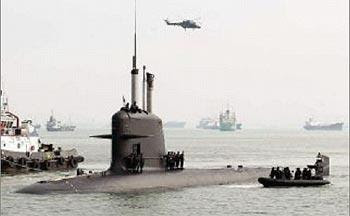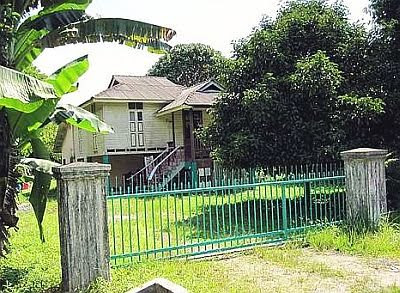Jerejak The Forgotten Island
[updated: 14:39 / 25032009]
THE ISLAND
The name Pulau Jerejak, was given by fisherman who lived on the island, long before it gained its alias as the Alcatraz of Malaysia because of the Jerejak prison. This 362ha island is located between Penang Main Island and Seberang Perai. It is an island rich with history, flora and fauna.
FRANCIS LIGHT
This island though not as famous compared to other island in Malaysia has had its fair share of the auspicious historical events. Francis Light, Founder of Penang was said to have arrived in Pulau Jerejak in early 1786 before heading on to Penang. (according to British document, Francis Light is the founder of Penang but from Malaysian history perspective, the island was part of the Kedah territory until Francis Light was given authority to develop The Penang as business hub for British Empire. Francis Light promised the military assistance to Sultan of Kedah unfortunately he failed to keep his words. Penang State government until today paying RM10,000 to Kedah Royal Family as tenancy fees for occupying the Kedah territorial land)
Jerejak made its debut in colonial records when Colonel Arthur Wellesley of Wellington, England proposed that the island act as an alternative naval base to Fort Cornwallis in 1797. The military post in Jerejak was suppose to provide protection for the new town opposite Jerejak, which was to be called Jamestown, now known as Bayan Lepas.
However a sudden outbreak of Malaria caused for a delay in plans. It is believed that the outbreak was a result of the clearing of the jungle. It was during this time that George Town emerged as a profitable port. Thus, the plan to turn Jerejak into a naval base was aborted.
QUARANTINE CENTRE
In order to stimulate the growth of Penang, Francis Light allowed immigrants to claim whatever land they could clear thus causing Penang to be flooded with immigrants. As a precaution, these immigrants were first sent to Jerejak Island for health inspection. In the year 1910, Jerejak was made a health quarantine center for immigrants planning to go to the main island. After passing the health check, they were sent to Penang to work. Later in the late 1930’s, the British Empire built a hospital for patients with Tuberculosis that could house 150 patients at one time. This was located at the eastern part of the island.
A RUSSIAN CEMETARY
Jerejak saw military action during World War II, when a German submarine attacked a Russian naval vessel. It is believed that Jerejak was the site for a German submarine base from June of 1943 to March 1944.
In the book entitled History of the USA Naval Operations in World War Two, S.E.Morison wrote German U-boats sunk about 18 ships in the Indian Ocean. A ceremonial cemetery dedicated to Russian soldiers still remains on the island. However, no records indicate that actual bodies were buried at the site.
A PENAL COLONY
The Jerejak Rehabilitation Centre began operating from 12 Jun 1969 to August 1993 with its first batch of 200 detainees. This first batch of inmates consisted of those detained during the 13th May 1969 race riots.
In it's one and only internal riot incidents in 1981, The Jerejak Rehabilitation Centre was rampaged when about 100 inmates rioted in the prison, destroying several buildings. The riot was caused by dissatisfaction over a decision to lengthen the service period of inmates.
The following years, saw an upsurge an upsurge in drug related convictions resulted in the highest number of detainees in Jerejak, 982 to be exact.
As a security measure, fisherman from nearby island were given strict instruction to keep a distance from 200 metres from the beach area of Jerejak. However, 7 inmates still managed to plan a getaway. The escapees were inmates who worked outside the prison area and were nearly finishing their sentences. The first escape incident in January 1988, saw 4 inmates 'leaving' the island while the second incident in Mac 1988 saw 3 inmates flee. The exact escape routes of these inmates still remains mystery.
In its course of closing down the prison, 900 detainees were transferred to prisons in Johor. The first transfer involved 100 detainees whom were sent to Muar prison, Johor. The following transfers were in-groups of about 60 detainees and were all stationed at the Simpang Ranggam Prison, Johor. The last group left on 13 August 1993. [The historical fact was copied from the location when I went to the Island recently. At present the Government with the private sectors have decided to transform the island to tourist destination. For further information you can visit Jerejak Resort & SPA at http://www.jerejakresort.com/]


Comments